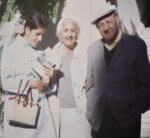
Are you keeping ‘cool’ this summer or succumbing to the heat?
Learn more about what happens in our brain during ‘cool’ and ‘hot’ moments and what huge differences it makes in our relationships.
We are only three weeks into the summer and already there has been a lot to learn. Most of us continuously find ourselves judging others and making assumptions about other people’s behaviors. We do this continuously in a scanning function in our brain. These assumptions justify our defensive behaviors. Our untested ‘realities’ give rise to disconnection, wall building and subtle and not so subtle negativity in our relationships.
In one of my most important relationships I was feeling disconnected. The reason I told myself was the other person’s lack of interest in me via an alliance with someone else (so petty right?) In a meltdown that led to a heart to heart talk we learned together that she had perceived me as controlling and leaving her out. We both suffer in our histories from feelings of exclusion and we are both scanning for exclusion in present time as well. It was such a relief to test our assumptions and defensive strategies and come back into reality and connection with each other. This was last Sunday.
On Monday, someone I work with came into my office and said she was feeling distant from a close relative but assumed it was the best that person could do in terms of intimacy. I immediately suggested maybe it was the best she could do too. There is, in fact, a dance between our defensive reactions with each other. Like a chemistry experiment gone bad; action, reaction, action, reaction in a huge out of control chain of events ……
Untested judgments and assumptions about others, while so compelling, are usually wrong. We are drawn to believe them because they help us order our worlds and because our brains are made that way. Here is the Neuroscience.
One of the laws that govern the nervous system is called Pattern Matching. The Brain has a Pattern Matching function. With every new experience, the brain searches for a match between the incoming pattern of neuronal activity and patterns already stored in memory. This pattern matching quest gives us the sense of recognition and familiarity. This means that perception happens through a comparison of past and present. There are two kinds of pattern matching. One I call ‘hot’ and one I call ‘cool’. The ‘hot’ response takes the shortest route to transmit sensory stimuli directly to the amygdala, which is poised to react and activate fight or flight. This emergency route by passes the executive cortex, sacrificing accuracy for speed in response. The second route seeks out detailed features for pattern matching and consequently is slower and ‘cooler’. Moving through the more complex executive cortex and on to the hippocampus, this pathway allows us to more accurately access, regulate, and inhibit behaviors. This more conscious awareness helps us test our assumptions. It helps us respond which fosters connection and gives rise to the best of ourselves and therefore the best chance for close and open relationships with others.
We have to learn this over and over again since the ‘hot’ part of our brain is the more expedient David Sedaris says this well:
“I’m always surprised by things I’d been telling myself for years had been other people’s fault, but then I would look in my diary and realize it was completely my fault! But I think that’s a really good aspect of a diary — your life is just written down and on paper, and sometimes you read it, and you’re just appalled by your judgment or by your jealousy or your pettiness. It’s O.K. to be reminded of it every now and then and think, Oh, right, I need to keep that in check. Usually you keep it in check for, like, 15 minutes. But I’ll take 15 minutes.”
I have made a 15-minute start this summer. Will you too?
